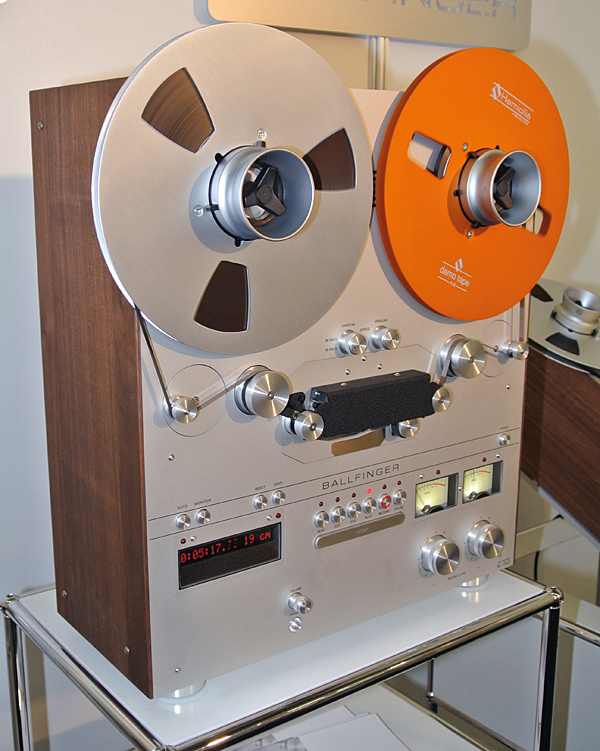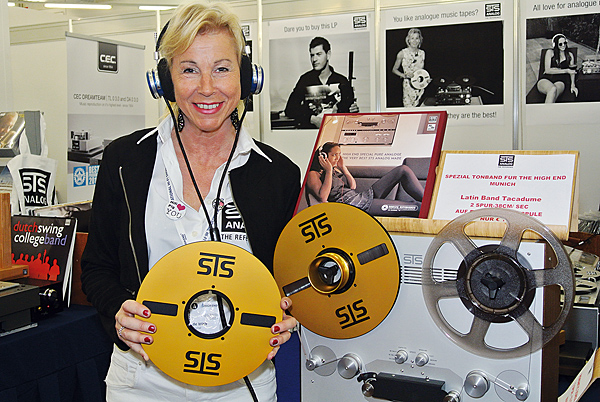Keeping it reel... Page 2

Upon returning to the UK, I found that I, luckily, had an excellent copy of the tape used. Frantically, I got one of my tape decks up and running. I even stacked two pairs of LS3/5As to replicate the conditions. It slaughtered my original vinyl copies, as well as the remastered anniversary LP, and any other editions in analogue or digital. Then I dug out my open-reel copy of Aretha Gold – a mere 3¾ips copy, well-worn. It, too, embarrassed every other format. Ditto for Roy Orbison's Greatest Hits.
Now the rumblings about the format, the earlier clues were making sense. For some years, there had been exhibitors displaying rebuilt, tweaked Technics and TEAC machines at US shows, services performed for clients who supplied the machines, as well as selling refurbished examples. Various exhibitors of amps and speakers, such as Joseph Audio, were using open-reel instead of LP or CD.
New To The Block
Joseph actually took it a stage further. The company co-exhibits with valve electronics manufacturer Doshi Audio, which produces the ultimate device for the tape addict: an external, no-holds-barred tape preamp that takes the signal straight off the heads. Joseph and Doshi weren't alone. Here a Studer, there a Revox – big reel-to-reel tape decks were turning up all over the place.
But these are seasoned industry pros, with their own engineers to keep their machines up-and-running sweet. So, it is my duty at this stage to discourage you from even considering the acquisition of a reel-to-reel deck, however much your passion for music begs the use of the finest format you can employ. Or afford. Of the two problems that face both the enthusiast rediscovering open-reel and the newcomer – sourcing tapes and sourcing machines – it is the latter which is the bigger issue.

To the best of my knowledge, only one firm makes brand-new decks. Ballfinger from Germany produces a studio-type range, with the basic unit starting at €8945 before VAT. Expect to pay around €10,000-15,000 for a deck fully kitted out to your desired specification; the consolation is that the machines are truly superb.
As seen this year at Munich, the forthcoming Thorens reel-to-reel machine will be made for it by Ballfinger. As for other makes, there are rumours of past manufacturers considering re-joining the fold, but I'm not optimistic. Case in point: there is still no sign of the gorgeous Revox deck seen in computer renderings a few years ago.
On The Up
Most users, then, must turn to secondhand tape decks, and eBay is awash with them. The problem is that most are 30-years-old or more, while the most desirable are the pro and semi-pro machines which will have a lot more miles on them than the average Akai 4000DS or Sony TC377. Unless you get lucky and know the supplier, the odds are that any deck you buy today will need a full service.

Clearly, this is no deterrent to those seduced by the sound. In keeping with the primary theme of this Investigation – has reel-to-reel made a comeback? – I turn to that bellwether of the obsolete: eBay. I have observed the prices of even well-worn machines climb with the near-vertical trajectory of vintage Rolex wristwatches.
Over the past two years, the best-selling, entry-level, domestic, Japanese-made machines from Sony (eg, the TC377), assorted Akais, TEAC's non-studio models and the like have gone from around starting bids of £100 to £300 or more. These are mainly limited to ¼-track playback and speeds of 3¾ and 7½ips, while spool size is limited to 7in. The more desirable middle models, which can handle 10in spools (eg, TEAC's X-10) start at £500, while the top-end units from these brands, which may also offer 15ips, have passed the £1000 mark.

Desirable Designs
For the most coveted machines – various Revoxes, especially A77s, B77s and PR99s – bids now start at £400 for working examples, and go as high as £3000. Enjoying the reel-to-reel limelight are the Technics machines such as the RS1500, which is among the most popular and desirable because the late examples handle both ½-track and ¼-track, and the three speeds of 3¾, 7½ and 15ips. Prices of these decks have shot up dramatically, from £500 to £1500 on average while the auto-reverse RS1700 adds another £200-£500.

Unless one has the space and the funds, at least two machines – ¼-track and ½-track, both with three-speeds – are required to accommodate the majority of tapes. I keep six decks to cover every possibility, and that's just for ¼in tapes. With a unit such as the Technics RS1500, one machine can accommodate pretty much every configuration of pre-recorded tape, but there is still the matter of equalisation. All vintage pre-recorded tapes seem to use NAB, yet modern pre-recorded tapes are produced with IEC/CCIR equalisation.

Going Pro
This multitude of speeds and layouts has led to demand for professional machines like the various Otari models, which do everything that the Technics deck will do, as well as featuring switchable NAB/CCIR equalisation. Dominating the upper echelons of reel-to-reel, however, and owned by the most serious enthusiasts as well as the contemporary tape labels, are assorted Studer machines, especially those from the 800-series. Prices range from £1000 for well-used models or parts donors, to £5000 or more. Other popular pro machines likely to find their way to the secondhand sources are Sony, TEAC and Tascam units.
Given that a list of tape deck manufacturers that existed over the years would run to the low hundreds, or the many dozens at least, websites have sprung up providing support in the form of information as well as parts sourcing. Various brands have their devoted followings, and there are specialists who look after Uher, Ferrograph, Tandberg, Dokorder, Leevers-Rich or any other make which strikes your fancy, however obscure. Me? I lie awake at night dreaming of a mint Crown 800...

























































